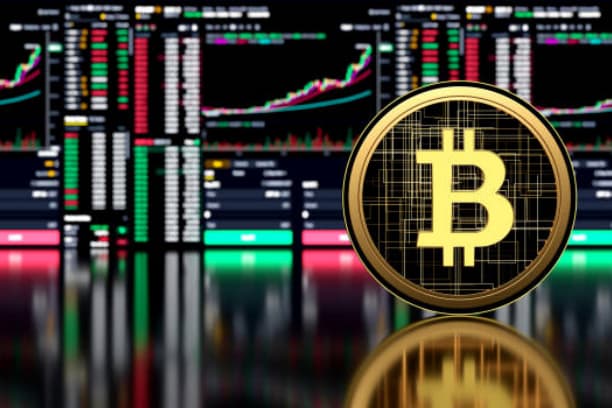DeFi (Decentralized Finance), an important part of the cryptocurrency space, is changing the traditional financial model at an alarming rate. Its unique advantages, including decentralization, high transparency, and no need for intermediaries, have enabled DeFi to achieve practical applications in a variety of fields, including lending, trading, and stablecoins. In this paper, we will deeply analyze DeFi's practical application scenarios, explore its future potential, and assess its transformative role in the financial industry.

Core application scenarios for DeFi
One of DeFi's core strengths is decentralization, removing intermediaries and conducting transactions and financial operations directly through smart contracts. This disintermediation has enabled DeFi to find practical applications in several fields. Below are a few of the main application scenarios for DeFi:
1. Decentralized Exchange (DEX)
Decentralized Exchange (DEX) is one of DeFi's most mature applications. Unlike traditional centralized exchanges, DEX allows users to exchange assets directly on the blockchain, avoiding risks such as theft of funds and platform crashes that may occur on centralized platforms. Common DEX platforms include Uniswap, SushiSwap, etc. Users can exchange assets without relying on third-party organizations.
- DEX Advantage:
- Completely decentralized, reducing security risks.
- The user's assets are always under their control and they don't have to worry about the exchange running away.
- Provide liquidity mining rewards to incentivize user participation.
2. Decentralized lending platforms
The DeFi lending platform offers a seamless lending experience that allows users to borrow and lend crypto assets without the need for a traditional bank intermediary. Through smart contracts, borrowers can lend out collateralized cryptocurrencies and lenders can earn interest by providing liquidity. Typical decentralized lending platforms include Aave, Compound, and others.
- Advantages of lending:
- No credit score is required and anyone can borrow.
- Interest rates are determined by market demand and supply and are usually more flexible.
- Users do not need to trust banks or intermediaries, increasing financial inclusion.
3. Stablecoins and decentralized payments
Stablecoins are cryptocurrencies that are pegged to fiat currencies, and their price stability makes them an important tool for transactions and payments in the DeFi ecosystem.Stablecoins such as Tether (USDT) and Dai are widely used payment tools in DeFi, and they are effective in avoiding the risks associated with cryptocurrency price volatility.
- Stablecoin applications:
- Used for transactions and payments on the DeFi platform to reduce risk.
- Supports cross-border payments, avoiding the high fees and lengthy times associated with traditional banks.
- Promote global financial inclusion, especially in regions with weak financial infrastructures.
DeFi's future potential and trends
DeFi is not only an important application scenario in the current cryptocurrency industry, but the innovative technology and mechanism behind it also brings far-reaching implications for the future financial system. As technology continues to advance and user demand increases, DeFi will usher in a wider range of applications and potential.
1. Integration with traditional finance
The integration of DeFi and traditional finance will become an important development trend in the future. Many traditional financial institutions have begun to pay attention to and participate in the field of DeFi, enriching their existing financial products and services through cooperation or self-development of DeFi solutions. For example, some banks have launched blockchain-based cross-border payment platforms in an attempt to integrate the transparency and decentralization features of DeFi.
- Involvement of traditional financial institutions:
- Provide more regulatory protection and enhance user trust.
- Accelerate the application of blockchain technology in the traditional financial sector.
- Enhance DeFi's liquidity and market depth.
2. Risk management in DeFi
Despite the many conveniences that DeFi brings, problems such as its technical vulnerabilities, the risks of smart contracts, and malicious attacks still exist. Therefore, risk management in the DeFi ecosystem will become an important development direction in the future. More and more projects are focusing on auditing and security, cooperating with third-party organizations to conduct security audits of smart contracts and reduce the occurrence of vulnerabilities and attacks.

- Risk management measures:
- Smart contract auditing: ensuring code security.
- Risk diversification: diversify risk through asset pooling to reduce the impact of volatility of a single asset.
- Decentralized insurance: insurance products are provided through smart contracts to protect investors from risk.
3. Efficient DeFi infrastructure development
As the DeFi market grows, issues such as platform performance, transaction costs and transaction speeds are surfacing. Therefore, building an efficient DeFi infrastructure will be the key to the future. Ether is currently the main public chain platform for DeFi, but with the increase in transaction volume, the problems of gas fee and transaction speed are becoming more and more obvious, and new public chain platforms such as Solana and Avalanche are on the rise.
- Directions for DeFi infrastructure optimization:
- Enhance transaction efficiency: Reduce transaction delays and costs to improve user experience.
- Cross-chain technology development: breaking down barriers between public chains and improving DeFi's cross-chain mobility.
- Scalability improvements: address network congestion and support more users and transaction volumes.
In summary: DeFi's future outlook
DeFi, as an innovative application of decentralized finance, is constantly changing the global financial ecology. From decentralized exchanges to lending platforms to stablecoin payments, DeFi's application scenarios are becoming more and more extensive, attracting a large number of investments and participants. With the continuous progress and innovation of technology, DeFi will play an even more important role in the future financial system. It not only provides more efficient, transparent and decentralized financial services, but also offers more financial opportunities and choices for global users.
DeFi in the future will be more integrated with traditional finance, and will also continue to innovate and optimize in terms of security, risk management and infrastructure construction. For ordinary users, there are more and more opportunities to understand and participate in DeFi, not only to enjoy more convenient financial services, but also to gain more investment opportunities in this emerging field.







